Themes
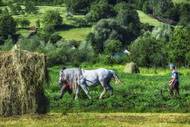
Agroecology is a scientific discipline, a set of practices and a social movement. As a science, it studies how different components of the agroecosystem interact. As a set of practices, it seeks sustainable farming systems that optimize and stabilize yields. As a social movement, it pursues multifunctional roles for agriculture, promotes social justice, nurtures identity and culture, and strengthens the economic viability of rural areas. Family farmers are the people who hold the tools for practising Agroecology. They are the real keepers of the knowledge and wisdom needed for this agenda. Therefore, family farmers around the world are the keys elements for producing food in an agroecological way.

To mitigate the pandemic’s impacts across the food system, global and country-specific interventions are to be taken simultaneously at various scales: measures meant to preserve and re-adjust the global food supply chains need to be complemented with context-specific solutions harnessing locally-available resources and goods. Family farmers are particularly well positioned to provide contextualized and, comprehensive solutions. They, their organizations and cooperatives are rooted in their territories and in their communities, they are closely embedded in local realities and for the production activities, they rely on their own production (or reproduction) of productive resources or on the locally available inputs. Working with them, governments can tackle multiple challenges and reach objectives encompassing economic, social and environmental dimensions of sustainable development.
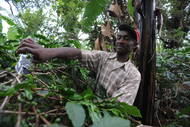
More than a billion of the world’s poorest people rely on forests and trees to provide food, fuel and cash income (FAO, 2012). Forest communities are also family farmers. For these people, forests and trees overlap directly with family farming. Indeed, it is the unique combination of forest and farm resources that has created complex agro-ecological and natural resource management systems all over the world. These systems have been the reservoirs of nutrition, genetic materials, fuel and energy, fodder and building materials, water retention and recharge, pollination and pest control, green manure and biological and cultural diversity.
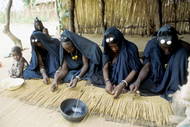
Indigenous peoples can contribute significantly to the family farming debate thanks to their wealth of traditional knowledge, spirituality and understanding of ecosystem management. Indigenous peoples is a highly diverse group adapted to live in many different ecosystems but always in close relationship with nature. Indigenous peoples share several key elements in their livelihoods that make them distinct. In particular, and with respect to their food systems, these are mainly: their food systems are holistic and combine gathering, hunting and cultivation; they follow gift economy with often low monetization levels; work is carried through reciprocity; the producing unit is the community or clan; they rely on communal resources like forests, lakes, rivers, lands and pastures; and their food systems are respectful of the environment in which they operate.
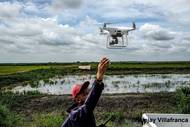
Innovation in family farming cuts across all dimensions of the production cycle along the entire value chain ‑ from crop, forestry, fishery or livestock production to the management of inputs and resources; from organizational strengthening to market access. It can also involve planting new crop varieties, combining traditional practices with new scientific knowledge, using sustainable farming and production practices, applying new approaches to animal disease control, post-harvest practices, participating in markets in new and more profitable ways, accessing and creating markets and other networks, generating and strengthening entrepreneurial and management skills, and building capacity for greater participation in policy-making processes,
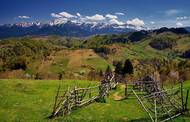
Mountain farming is largely family farming. Thanks to its small-scale character, diversification of crops, integration of forests and husbandry activities, and low carbon footprint, mountain agriculture has evolved over the centuries in an often harsh and difficult environment and contributed to sustainable development. Cultivating mountain areas, with their patches of useable land dispersed at different altitudes, with many different climates and limited use for mechanization, is most effectively carried out by family farms. Family farming in mountains is as diverse as the myriad mountain landscapes of the world, but at the same time, there are also commonalities.
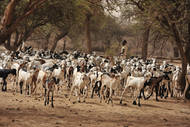
Several hundred million pastoralists manage rangelands coving one third of the terrestrial land surface. They live in the world’s harshest environments and produce food where no rain-fed crops can grow. Pastoralists are typically involved with herding livestock including cattle, goats, sheep, camels, yaks, llamas, buffalos, horses, donkeys and reindeer. They produce meat, milk, eggs and non-food products such as hides, fibre and wool. Pastoralism is practiced on all continents and is mainly found in dry, cold and mountainous areas. In such challenging territories pastoralism presents the best livelihood strategy to provide food, income and employment.
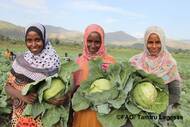
The new generations play a vital role as agents of change for the transformation of rural areas and agri-food systems. Youth can play a pivotal role in revitalizing local economies, driving innovation, strengthening civil society organizations (CSOs), managing natural resources and designing public policies for rural development.
Youth skills need to be developed and job and entrepreneurship opportunities created to ensure generational renewal and to counter rural–urban migration.
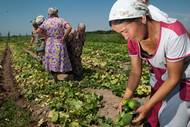
Family farmers adopt various strategies to increase and diversify income and livelihoods. These strategies are often gendered: men usually focus on lucrative crops, or migrate as seasonal or permanent workers; while women cultivate the family land for household consumption, care for small livestock, and process or sell part of their production in local markets. Increasingly, rural women also migrate to find employment away from their areas of origin. Rural women engage in farm and off-farm activities to ensure their families’ food security and to diversify income sources. They contribute to family farming with their labour and knowledge of agricultural practices and biodiversity.
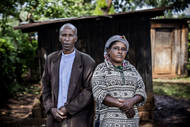
About 90 percent of the world’s 570 million farms are owned and operated by families. Most are small and are found in the rural areas of the developing world. Many of these smallholder family farmers are poor and food insecure and have limited access to markets and services. Their choices are constrained, but they farm their own land and produce food for a substantial proportion of the world’s population. Besides farming they take on multiple (often informal) economic activities to contribute towards their small incomes. Today, there is a need for a sustainable agriculture in order to tackle the triple challenge of producing more food, creating more jobs and preserving the natural resource base: small family farmers lie at the heart of the solution.
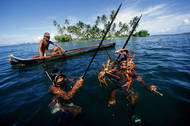
The small-scale fisheries sector tends to be firmly rooted in local communities, traditions and values. Many small-scale fishers are self-employed and usually provide fish for direct consumption within their households or communities. Women are significant participants in the sector, particularly in postharvest and processing activities. It is estimated that about 90 percent of all people directly dependent on capture fisheries work in the small-scale fisheries sector. Small-scale fisheries contribute about half of global fish catches. When considering catches destined for direct human consumption, the share contributed by the small-scale fisheries increases to two-thirds.
